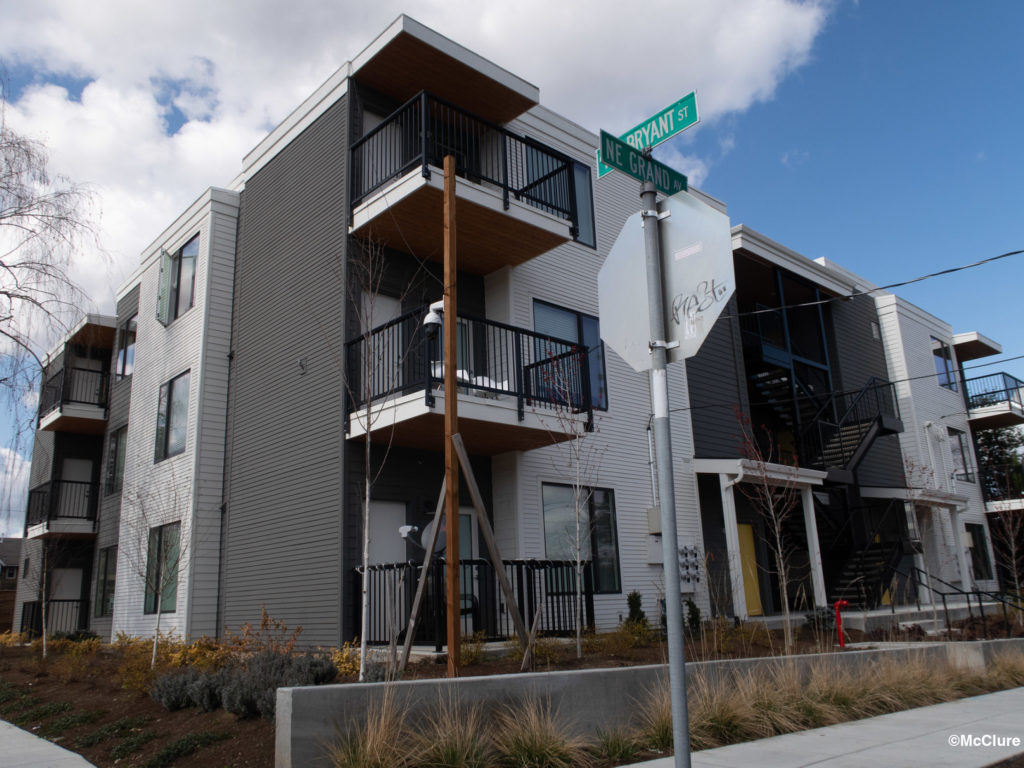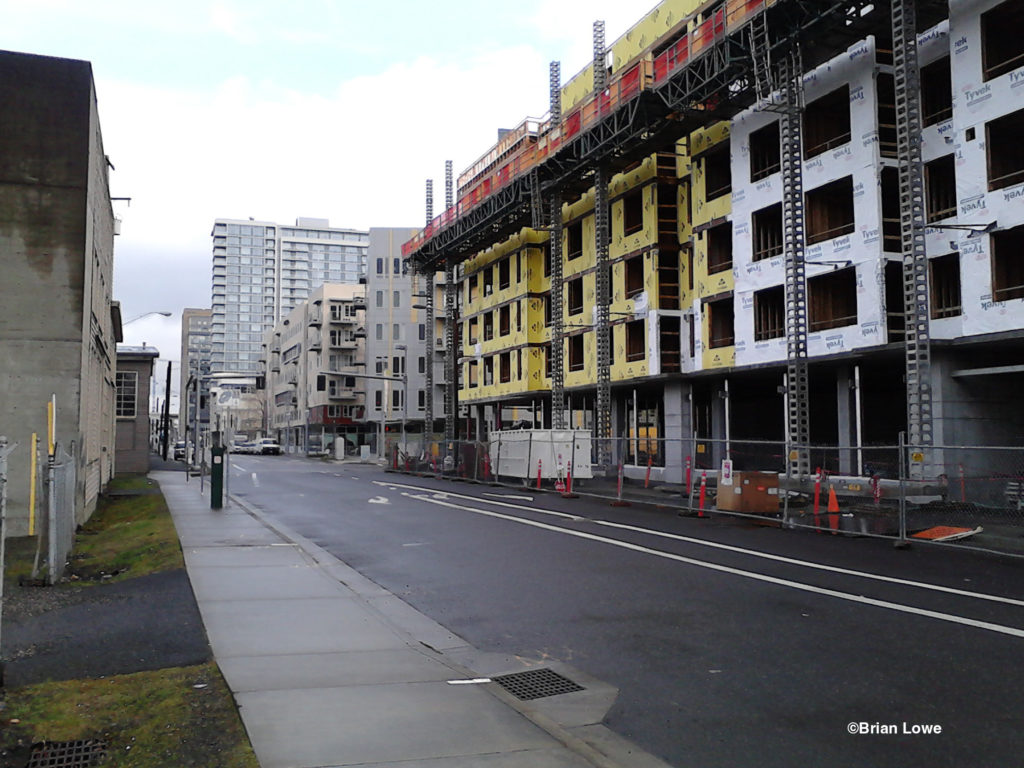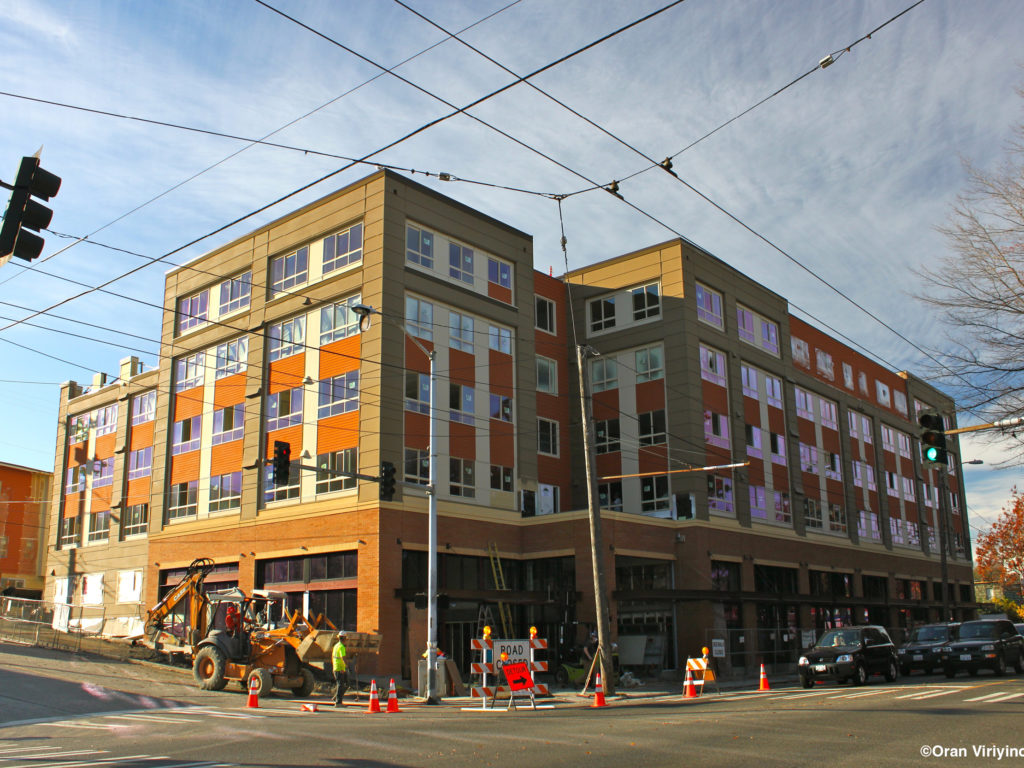Northwest cities struggle to loosen
their housing regulations
By Sal Rodriguez
February 3, 2023

Northwest cities struggle to loosen
their housing regulations
By Sal Rodriguez
February 3, 2023
Across the country, local governments make it much harder than it ought to be to build housing.
Some impose rigid land-use policies dictating what types of housing can and cannot be built in a given area. Others operate Byzantine regulatory schemes, which require developers to jump through superfluous hoops to comply with local edicts. And some cities impose well-intentioned policies like rent control to keep costs to renters down – with the net result over time being reduced incentive to build more rental units.
The costs to developers, renters, homeowners and communities alike can be significant. One recent study by the National Multifamily Housing Council and the National Association of Home Builders estimates that regulations alone can make up around 40.6 percent of multifamily housing development costs.
In this analysis, I examine at how three distinctly different but major Northwestern cities – Portland, Ore., Seattle, Wash., and Boise, Idaho – are addressing their respective housing crunches.
Portland’s rent controls cause housing starts to plummet
Housing development in the Rose City has been hobbled in recent years by a confluence of counterproductive policies at the state and city level.
In 2016, the Portland City Council successfully pushed the Oregon Legislature to lift a statewide ban on inclusionary zoning laws requiring developers to set aside a certain number of units in new developments for lower-income residents.
“This body seems to be absolutely impervious to any logic about market forces,” Oregon Senate Minority Leader Ted Ferrioli, R-John Day, said at the time in opposition, echoing concerns that, as well-meaning as such a policy might be, the predictable outcome of such a policy is to make housing development even more expensive.
Alas, in December 2016, Portland used its newfound authority to impose an inclusionary zoning ordinance. “The policy will require developments with 20 or more units to set aside 20 percent of those units for households making less than 80 percent of the median family income, which in 2016 was $58,650 for a family of four,” the Oregonian reported at the time.
Fast forward a few years and the results have been more or less as predicted. In 2021, Gerard Mildner, a professor of real estate at Portland State University, observed: “Housing production in the city has collapsed in recent years, despite record home prices and rents. Portland remains attractive to migrants from California, yet our excessive regulation of new development has caused existing housing to become ever more unaffordable.”
Housing permits in the city plummeted from
5,025 in 2016 to just 2000 in 2022.
Compounding this problem, in 2017 the city imposed a local rent control ordinance and the state of Oregon followed suit in 2019.
A Realtor-commissioned study in 2022 found that between 2014 and 2020, the city lost 14 percent of its single-family rental properties, a trend which accelerated between 2017 and 2020, and which exceeded the rate of loss in the surrounding metropolitan areas.
“A mom-and-pop landlord who isn’t an attorney and only has a couple of units and isn’t doing this as their primary job, they’re really in a bad spot,” Jeremy Rogers, director of policy and legal affairs at Oregon Realtors, told real estate website The Real Deal in 2022.
None of this should be in any way surprising. Both inclusionary zoning and rent control policies have the practical effect of artificially constraining what developers and property owners can expect to get back on their investments.


Over the long-term, the better approach is to focus on boosting the supply of housing by making it easier to build more housing. To that end, the state of Oregon and the city of Portland have also worked to liberalize land-use policy to permit “missing middle” housing construction – such as townhomes and fourplexes.
In 2019, the state of Oregon passed legislation requiring local governments to allow the construction of up to four units of housing on land zoned for single-family housing. In 2020, Portland implemented local changes accommodating this state law and in 2022 made further changes to make it easier for new housing to actually get built.
The city of Portland’s website in explaining the rationale of these changes hits the right notes, “Expanding the kinds of housing choices that are available in our residential neighborhoods is an important step to give more people the opportunity to live close to schools, parks, and jobs at a variety of price points.”
That sounds encouraging, but the city needs to realize the error of rent control and inclusionary zoning. This is all the more important given Portland’s own expectation that 100,000 new households will be living there by 2035. In another plus, Portland has worked over the last decade to liberalize and facilitate construction of accessory dwelling units, including cutting back costly development fees.
Seattle resists zoning reform and embraces affordability edicts
Seattle is one of the fastest growing cities in the country, and Washington’s Department of Commerce projects the state as a whole will need to add about 1 million new homes to keep up with population growth over the next two decades.
Consistent with this, the state Legislature is now considering its own bill requiring cities with populations above 6,000 people to allow for missing middle housing on single-family zoned lots.
In Seattle, approximately 70 percent of the city is zoned for single-family homes only. The result has been predictable. With few opportunities to build housing to keep up with rising demand, housing costs in the city and surrounding region have soared. As is usually the case, the burden falls hardest on poor and minority communities.
In January 2023, Challenge Seattle, a local business advocacy group, called for zoning reform. “Zoning reform is the critical enabler for removing regulatory barriers standing in the way of the private market producing more housing units,” it said. The group also offered straightforward suggestions on permitting reform like, “digitize and automate the permitting process” and “create a system that allows permitting steps to occur in parallel.”
Efforts at statewide zoning reform last year by Gov. Jay Inslee were resisted by Seattle Mayor Bruce Harrell, who campaigned for mayor as a defender of single-family zoning.



To its credit, Seattle did legalize accessory dwelling units in 2019. “Seattle has a housing crisis, and we have a responsibility to grow the supply of housing options as quickly as possible. We need to use every tool in our toolbox to boost the supply of housing,” then-Mayor Jenny A. Durkan said upon signing the law, rebuffing a Seattle Times editorial denouncing the ADU change as “Seattle’s neighborhood attack.”
Like Portland, Seattle also has inclusionary zoning through what’s called the Mandatory Housing Affordability (MHA) program. The program requires developers to either set aside a certain percentage of units for lower-income residents or pay an in-lieu fee.
A local homebuilders group issued a report in December 2021 noting that townhome permit intake had plummeted almost 70 percent since the implementation of MHA, depriving thousands of residents of potential housing options.
MHA is also now under challenge by the Institute for Justice on behalf of local homeowner Anita Adams. Here’s how they tell her story: “Anita wants to build a modest addition to house her two adult children. But before she can get a building permit, the city demands that she either build additional ‘affordable’ housing units or pay nearly $77,000 into the MHA program. Those fees make Anita’s plans impossible –and leave the city with fewer affordable housing units.”
IJ argues the program is unconstitutional given the extortionate nature of such a demand.
Meanwhile, in 2021 the Seattle City Council approved local ordinances seeking to get out from under a statewide ban on rent control ordinances by requiring, as Reason’s Christian Britschgi reported, “landlords to give generous notice to their tenants of any rent increases and to provide relocation expenses to low-income renters who do move in response to large rent hikes.”
Landlords at the time warned such policies would lead them to raise housing costs. If the experience of Portland or any other city seeking to impose either rent control or rent control-by-proxy are an indicator, their warnings should probably be heeded.
As out-of-staters move in, Boise fails to update laws to promote construction
The city of Boise isn’t very big – with around a quarter of a million people calling the city home – and doesn’t yet have policies like rent control. And yet, like other cities, it too is experiencing a housing crunch. Indeed, the city’s own housing needs assessment calls it “an unprecedented crisis.” In fact, one study found that Boise is the nation’s least-affordable city when local incomes are considered.
The fact pattern in Boise is the same as it is in any jurisdiction facing housing problems. The city, as with the state, has failed to produce enough housing to keep up with growing demand. The pandemic only exacerbated the preexisting problem, as significant numbers of people moved to the small city from higher-income states such as California and Washington, driving up the cost of housing. According to one estimate, from 2020 to 2022 rents surged around 40 percent in response.
The city itself acknowledges one culprit: the lack of any zoning reform in decades.
“The existing zoning code is outdated, as it was created over 55 years ago,” the city’s zoning rewrite page notes. “Our city has changed significantly throughout time, and so have the planning tools we use and rely on to preserve what makes Boise special and improve our city as it grows.”
The city has been engaging local residents on how best to do that, initially proposing allowing up to four units of housing to be built by right, and calling for consolidating the city’s three residential zoning districts to two, but residents pushed back.
The city backtracked.
“Instead, if a developer wants to build higher density developments, like a triplex, a fourplex, townhomes or a cottage court of smaller homes in a lower density residential zone, they need to agree to make some units affordable and build with sustainable energy and water conservation techniques,” reported BoiseDev.
That might be better than nothing, but we know how those mandates will stifle some of the benefits of zoning reform. See: Portland and Seattle.
To its credit, though, Boise has liberalized its rules on accessory dwelling units and is piloting movable tiny homes.
“ADUs are sometimes allowed in some parts of the city. This program will assist residents who want to build and rent out a unit at an affordable rate for 10 years. Participating residents will receive resources from the city, including help with permitting and an exemption for city impact fees,” Idaho Press reported last year.
Conclusion: Liberal and conservative cities need to embrace market approaches
On the plus side, it’s clear the word is out about the need for zoning reform.
Many cities maintain sweeping restrictions on what types of homes can be built where – and are now dealing with the long-term consequences of such restrictions. Zoning reforms which allow property owners to build housing to meet market demand are low-hanging fruit for jurisdictions that are serious about getting more housing built.
Cities are also increasingly comfortable with ADUs, which can help provide a needed boost to housing without significantly altering the character of local neighborhoods.
However, efforts to mitigate high housing costs through policies like rent control and affordable housing mandates might be politically appealing, but in the long run they’re not the answer cities need. The goal should be to boost housing supply by allowing market forces to work.
Sal Rodriguez is opinion editor for the Southern California News Group and a senior fellow with the Pacific Research Institute.

